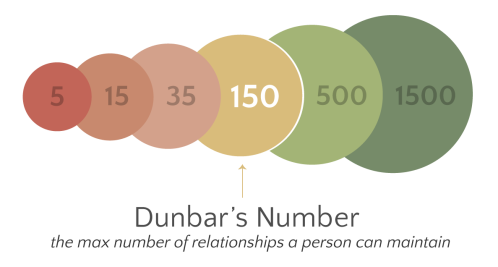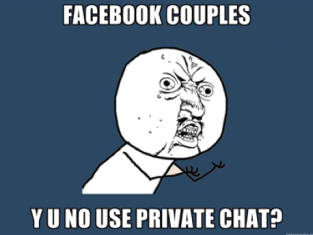Social media is a way to stay connected, either publicly or privately. It allows us to maintain relationships over geographical distance, and provides as somewhere for relationships to be maintained and built between people from a wide ranged demographic.
Due to the number of people using the internet grew during the 90’s, internet researcher had more opportunity to study communities and networks that were developing on-line. They started to notice the “continuity of offline relationships and behaviours of users…amplifying the importance of social context” (Hinton & Hijorth, 2013). For example, Barry Wellman and Caroline Haythornthwaite (1998 & 2002) studied computer scientists working in Universities, and how they used computer networking as part of their work and social communication. They found that over all, people communicated more depending how strong their offline connections were. They discovered that people who were on these networks more, were people who were already friends, or who’d developed relationships through their work (Haythornthwaite & Wellman, 1998). They began understanding that on-line communities, where offline factors were recognised, as having a crucial role in on-line communication (Wellman and Haythornthwaite, 2002).
Similarly, Daniel Miller and Don Slater (2001) researched how Trinidadians used the internet, specifically looking at their on-line behaviour and how it is put into context with other cultural, offline activities. They saw that in order to understand Trinidadian use of the internet, it’s important to consider their geographical place and their offline social world. They describe their approach to see how Trinidadians use the internet as “one that sees it embedded in a specific place, which it also transforms” (Miller and Slater, 2001. p.21). In other words, being Trinidadian played a key factor in how and why the people in Trinidad went on-line, and is some cases, the on-line environment gave them a space where people could be Trinidadian. This shows how “the internet shapes, and is shaped by the cultural context in which it is performed” (Hinton and Hijorth, 2013. pg 38.).
Futhermore, Parks (2001) examined MySpace users, looking at how often people logged in, how many times they updated their profiles, and how many people they were connected to. Other than finding that most accounts were unused and had very few on-line friends, he noticed that people with a large amount of friends on MySpace mostly were connected with people in a fairly small geographical distance from themselves (Parks, 2011). Therefore people are using Facebook to maintain and stay connected with existing offline connections and local relationships. He discovered that offline and on-line relationships are closely linked.
So, in different ways and by using different case studies and people to study, Wellman and Haythornthwaite (1998 & 2002), Miller and Slater (2001), and Parks (2011) all discovered that mutual shaping can be seen through how connections and relationships are maintained using social media by the intertwining of offline and on-line social relationships and activities.

(Getty Images, n.d.)






